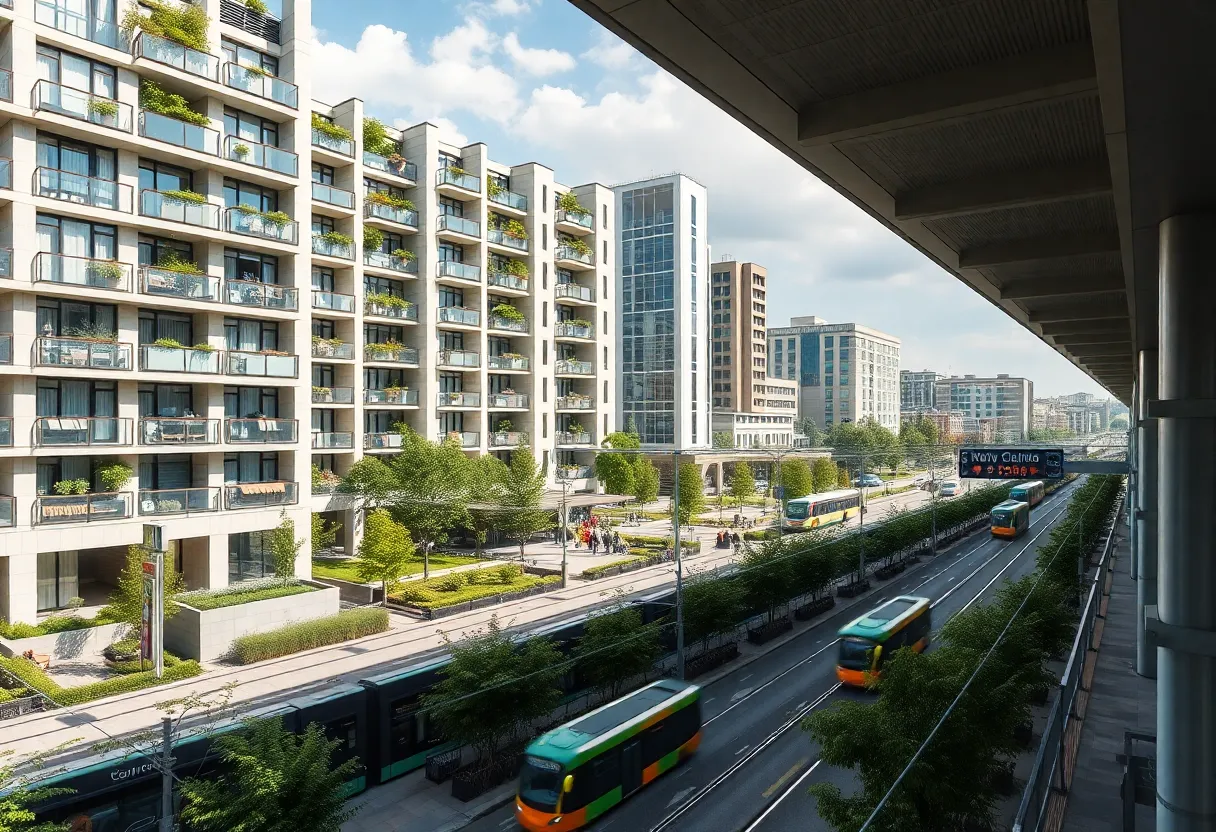News Summary
Governor Gavin Newsom has signed Senate Bill 79, which allows for the construction of taller apartment buildings near transit stations in California. This law aims to address the state’s affordable housing crisis by promoting housing development near public transit, potentially impacting areas around San Diego and beyond. While supporters applaud the move for enhancing public transport use, critics raise concerns regarding local governance and neighborhood preservation. The law includes exemptions and specific provisions for smaller cities to ensure some control over local planning.
San Diego, CA — Governor Gavin Newsom signed Senate Bill 79 (SB 79) on Friday, enacting a significant shift in California’s housing policy. This new law, known as the Abundant and Affordable Homes Near Transit Act, allows for the construction of taller apartment and condominium buildings near transit stations, overriding local zoning rules in specific areas.
Under SB 79, developers are permitted to build structures up to eight stories tall adjacent to transit stops. Projects within a quarter-mile of these stops may be up to six stories, while developments situated between a quarter-mile and half-mile can reach five stories. The legislation will impact transit stops statewide, which includes all stations on the San Diego Trolley and the Sprinter.
The law aims to address California’s ongoing affordable housing crisis by promoting housing development in areas that encourage public transit use. Supporters believe this aligns with the state’s climate goals by enhancing public transport usage and reducing dependency on automobiles. However, critics are concerned that SB 79 may threaten single-family neighborhoods and strip local cities of their land-use authority.
Despite its wide-reaching implications, SB 79 includes exemptions for specific commuter rail lines, such as Coaster and Amtrak, effectively sparing coastal areas like Carlsbad, Encinitas, Solana Beach, and Del Mar from its effects. An additional amendment limits its impact on rapid bus lines unless these routes have dedicated lanes and service frequently, such as every 15 minutes, narrowing its application to circumstances affecting parts of MTS bus route 225 in Chula Vista.
The impact of SB 79 will vary from city to city, depending on prior development patterns near transit stations. For instance, neighborhoods in San Diego like Little Italy and Mission Valley are expected to experience minimal influence, as they already possess existing developments near transit areas. In contrast, cities such as Santee and El Cajon may see more extensive changes due to their current lack of such developments.
Mayor Todd Gloria of San Diego has expressed his support for the legislation, highlighting its potential to facilitate housing construction near public transit hubs. The new law grants cities the ability to manage housing density within their communities and allows for phased implementation of denser zoning. It also provides avenues for cities to apply for exemptions for historical preservation and wildfire risk, while allowing them to charge fees on developers to cover infrastructure needs.
For smaller cities like Lemon Grove, which boasts a population of fewer than 35,000 residents, there are specific provisions allowing projects within a quarter-mile of transit stops instead of the standard half-mile requirement. Furthermore, a percentage of the housing constructed under SB 79 must include rent-restricted units, though cities are free to impose stricter eligibility standards.
Nonetheless, the legislation encountered significant opposition, garnering pushback from organizations like Neighbors for a Better California, which assert it undermines local governance and long-term urban planning efforts. Leaders such as Encinitas Mayor Bruce Ehlers have voiced strong opposition, emphasizing the necessity of considering community needs and local planning processes.
The passage of the bill was narrow, facing divided opinions among San Diego’s representatives in the California legislature. Proponents, including organizations advocating for housing growth, argue that SB 79 will primarily affect less than one percent of transit stops across California while allowing some local control in design and permitting processes. The legislation is anticipated to have a more pronounced impact on regions such as Los Angeles and San Francisco, where development along transit routes is currently limited.
Train stations with high-frequency service may allow for even greater flexibility, enabling eight or nine-story structures directly adjacent to major transit hubs. Overall, SB 79 represents a significant change in California’s approach to managing housing demand and transit-oriented development while setting off debates on land use and neighborhood preservation.
Deeper Dive: News & Info About This Topic
HERE Resources
Improvements in Student Performance at San Diego Community Schools
San Diego’s Controversial 22-Story Housing Development Proposal
San Diego Unified School District Restructures Middle School Programs
California Lawmakers Pass Senate Bill 79 to Upzone Transit Areas
San Diego Faces Second-Highest Inflation Rate in the US
San Diego County Implements Monthly Homelessness Reporting Initiative
California Court Upholds Discharge Decision for Psychiatric Patient
San Diego Opens New Development Services Headquarters
California’s Retail and Dining Landscape Evolves
San Diego Implements Cap on Accessory Dwelling Units
Additional Resources
- Patch: Newsom Signs Sweeping Housing Bill
- Wikipedia: Housing in California
- Times of San Diego: Newsom SB 79 Housing Development
- Google Search: California Housing Policy
- San Diego Union Tribune: SB 79 Impact
- Encyclopedia Britannica: Housing
- NBC San Diego: Protest Against Housing Bill
- Google News: California Senate Bill 79

Author: STAFF HERE SAN DIEGO WRITER
The SAN DIEGO STAFF WRITER represents the experienced team at HERESanDiego.com, your go-to source for actionable local news and information in San Diego, San Diego County, and beyond. Specializing in "news you can use," we cover essential topics like product reviews for personal and business needs, local business directories, politics, real estate trends, neighborhood insights, and state news affecting the area—with deep expertise drawn from years of dedicated reporting and strong community input, including local press releases and business updates. We deliver top reporting on high-value events such as Comic-Con International, San Diego County Fair, and San Diego Pride Festival. Our coverage extends to key organizations like the San Diego Regional Chamber of Commerce and United Way of San Diego County, plus leading businesses in biotechnology, healthcare, and technology that power the local economy such as Qualcomm, Illumina, and Scripps Health. As part of the broader HERE network, including HEREAnaheim.com, HEREBeverlyHills.com, HERECostaMesa.com, HERECoronado.com, HEREHollywood.com, HEREHuntingtonBeach.com, HERELongBeach.com, HERELosAngeles.com, HEREMissionViejo.com, and HERESantaAna.com, we provide comprehensive, credible insights into California's dynamic landscape.





